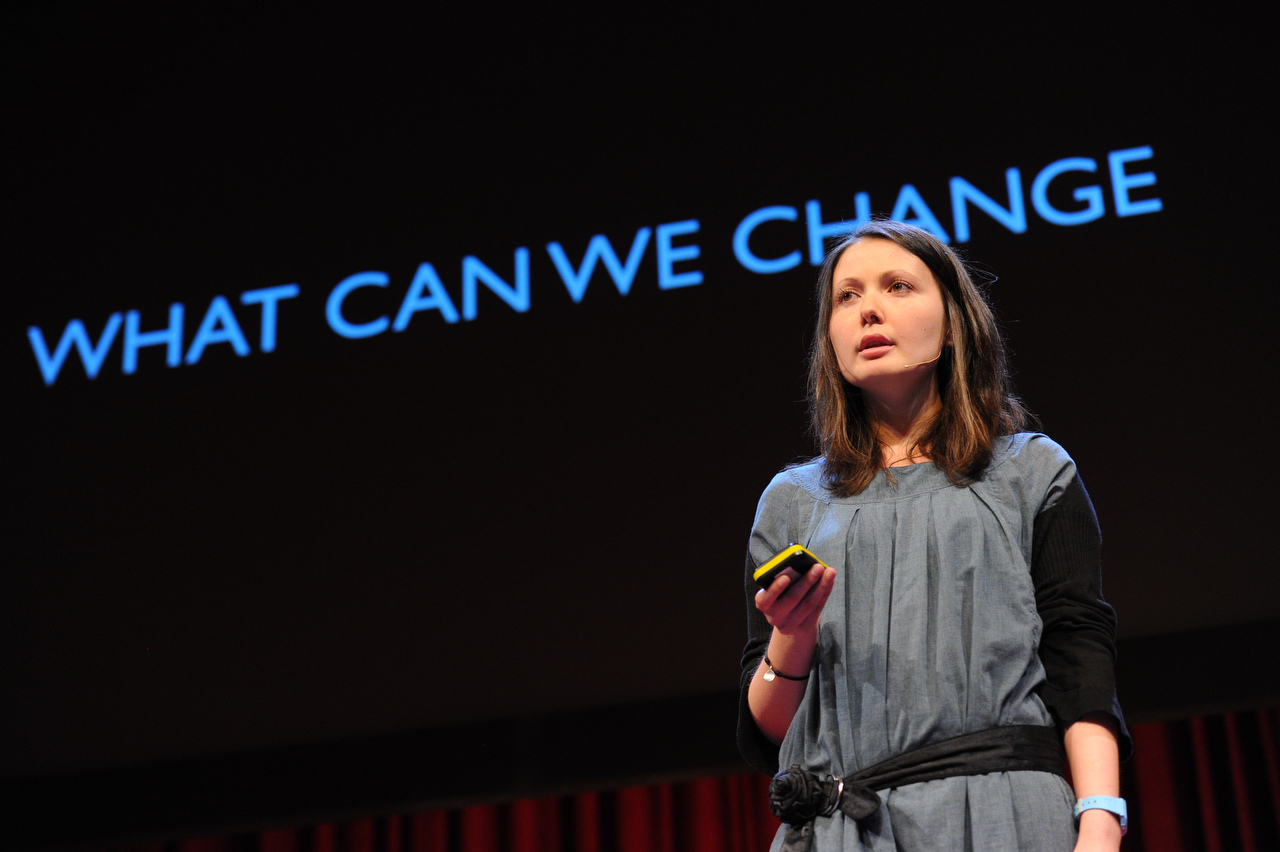Yana Buhrer Tavanier, speaking at the TEDGlobal 2011 TED Fellows Talks, Monday, July 11, 2011, in Edinburgh, Scotland. Photo: James Duncan Davidson / TED
Somi, singer + cultural activist: Raised in Zambia, living in New York, vocalist and songwriter Somi and her ensemble wake the TED Fellows Talks session into the rhythm of the day with sensual jazz stylings. Not only has Somi collaborated with the likes of Bobby McFerrin, Baaba Maal, John Legend, and Cassandra Wilson, she’s also founder of New Africa Live, a nonprofit organization dedicated to celebrating the very best of contemporary African artists working in the performance, visual, and literary arts.
Sonaar Luthra, water testing innovator: Sonaar’s Water Canary is an open-source device that inexpensively gives information about water safety, especially during humanitarian crises. Testing water in the field requires time and complex, expensive equipment. Meanwhile, lives are lost. Sonaar’s working on a fast and cheap device that tells you immediately –- via a red or green light -– whether water is contaminated. Integrated wireless networking will allow the information to be mapped in real time, so hazards to be contained before they become bigger crises.
Genevieve von Petzinger, cave art researcher: When did Ice Age humans develop our capacity for music and art? Genevieve examines Ice Age art, culture and behavior to figure out how our ancestors perceived the world, and shows their ingenuity and creativity. She shows us surprising examples of music, art, myth and a gorgeous house (yes, our “caveman” ancestors didn’t live in caves) made of stacked mammoth bones.
Aparna Rao, artist: Senior Fellow Aparna uses technology to create whimsical and playful art installations that surprise people with motion, sound, and warm humor. The mischievous artist even makes her viewers disappear! Watch this video to capture the whimsical magic of her art …
Yana Buhrer Tavanier, mental health activist: Yana fights for the rights and well-being of mental health patients, including children, in the Balkans, where they too often experience inhuman treatment and appalling neglect –- drugged, hungry, and ignored. “They are stored in warehouses for people for life with no way out,” she says. How to help? What’s most needed, she says, is international pressure on governments to close down institutions and create community-based care, which has already been proven to save lives.
Suleiman Bakhit, comic creator and social media entrepreneur: After being attacked for being an Arab soon after 9/11, Suleiman realized there were no Arab superheroes. So he started to create them, asking children in the Middle East, “If you had the power to change the world, what would you do?” Now he fights extremism with comic books –- promoting tolerance, unity and empowerment. This week, he’s launching the first social networking game on Facebook, by and for Arab youth.
Christine Lee, bioarcheologist: Christine studies ancient skeletons from China and Mongolia, between 206 BCE–220 CE, and pulls surprising information from the lives of the people. She finds proof of difficult conditions and a violent life. Women often suffered physical abuse, women and children often starved to death when their men died in battle. She hopes that her work will introduce these ancient people, little known outside Asia, to a new audience.
Manuel Aguilar, energy entrepreneur: The founder of Quetsol introduces us to a family in Guatemala who live on $330 a month, using candles and kerosene for light and fuel, a health and environmental hazard. He developed and sells a solar lighting kit using a small solar panel and LED bulbs, offering a renewable, inexpensive form of light, as well as a way to charge cell phones. He’s improved the lives of this family and many others –- even though the kids now have to do homework! As he says, “The faster we contribute, the better it is for all of us.”
Nathalie Miebach, weather artist: Nathalie is fascinated by weather. She collects data about it, compiles the numbers, and translates them into intricate, colorful baskets – transforming number values into the form of a three-dimensional sculpture representing moon phase, tides, water temperature, atmospheric temperature and more. She also translates the information into performable musical scores –- and then translates the musical scores back into sculpture. Read more about her in last weekend’s New York Times >>
Jodie Wu, appropriate technologist: In Tanzania, a staple food –- about one-third of the diet -– is maize, hand-threshed by beating it with sticks. It’s hard and painful work, and leads to a 20 percent waste of food. Jodie put together a bicycle, a maize sheller, and adaptors that can plug other tools into bikes, making the humble vehicle a pedal-powered multitasking machine –- “Sort of like an iPhone!”
Jon Lowenstein, documentary photographer: Jon’s work documents power, poverty and violence, covering everything from elections in Afghanistan to the aftermath of the 2010 Haiti earthquake to social violence in Guatemala to immigration. He shows the horrific impact of social violence here, telling, for example, the story of bus drivers being extorted and murdered on a regular basis. His images capture the tragedy in graphic detail, calling attention to the social and economic inequalities, and inadequate justice system, that leads to such violence.
Julie Freeman, tech artist: It’s a question only an artist would ask: “I wondered whether fish could make music.” Julie set out to find out, of course. She caught and tagged fish in a reservoir with bioacoustic tags, which emitted sonic signals picked up by an array of underwater microphones, their positional data converted to sound and animation. The result -– incredibly appealing rhythms and graphics, giving insight into the pleasure in the patterns of unpredictability.

Comments